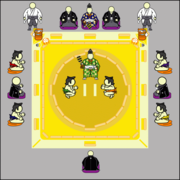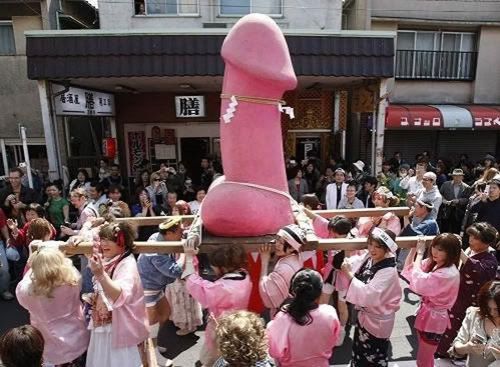TENGU MYSTERY, THE DEVIL FLY FROM JAPAN
 10:17 AM
10:17 AM
 wahyu
wahyu
 |
| TENGU |
 10:17 AM
10:17 AM
 wahyu
wahyu
 |
| TENGU |
 11:47 AM
11:47 AM
 wahyu
wahyu
 Harajuku (原宿?) Is a popular designation for the area around JR Harajuku, Shibuya District, Tokyo. This area is famous as a place young people gather. The location covers around the Meiji Shrine, Yoyogi Park, shopping centers Takeshita Street (Takeshita-dōri), the department store Laforet, and the Yoyogi National Gymnasium. Harajuku is not an official designation for the name of the place, and are not included when writing the address.
Harajuku (原宿?) Is a popular designation for the area around JR Harajuku, Shibuya District, Tokyo. This area is famous as a place young people gather. The location covers around the Meiji Shrine, Yoyogi Park, shopping centers Takeshita Street (Takeshita-dōri), the department store Laforet, and the Yoyogi National Gymnasium. Harajuku is not an official designation for the name of the place, and are not included when writing the address. 11:46 AM
11:46 AM
 wahyu
wahyu
 Samurai (侍 or 士?) Is the term for the elite class of military officers before the era of industrialization in Japan. The word "samurai" is derived from the verb "samorau" ancient Japanese origin, was transformed into "saburau" which means "serve", and eventually became the "samurai" who worked as a waitress for the employer.
Samurai (侍 or 士?) Is the term for the elite class of military officers before the era of industrialization in Japan. The word "samurai" is derived from the verb "samorau" ancient Japanese origin, was transformed into "saburau" which means "serve", and eventually became the "samurai" who worked as a waitress for the employer.  2:09 PM
2:09 PM
 wahyu
wahyu
 The dohyō (土 俵) is the ring in which sumo wrestling bouts are held. A modern dohyo is a circle of rice-straw bales 4:55 meters in diameter, mounted on a square platform of clay 6.7m on a side, and 34 to 60 cm high. The surface is covered by sand.
The dohyō (土 俵) is the ring in which sumo wrestling bouts are held. A modern dohyo is a circle of rice-straw bales 4:55 meters in diameter, mounted on a square platform of clay 6.7m on a side, and 34 to 60 cm high. The surface is covered by sand.
A new dohyō is built prior to each tournament by the yobidashi, who are responsible for this activity. The dohyō is removed after each tournament, and in the case of Nagoya, pieces are taken home by the fans as souvenirs. The yobidashi also build the dohyō for training stables and sumo touring events.
Layout of, and placement of sumo participants around, a dohyō
The diameter of the ring is 15 Shaku (4:55 meters), which increased from 13 Shaku (3.94 meters) in 1931. [1] The rice-straw bales (Tawara (俵)) which form the rings are one third the standard size and are partially buried in the clay of the dohyō. Four of the Tawara are placed slightly outside the line of the circle. In Olden times this was to allow rain to run off the surface, when sumo tournaments were held outdoors in the open. Today a wrestler under pressure at The Edge of the ring will often try to move himself round to one of these points to gain leverage in order to push back more effectively against the Opponent who is trying to force him out.
An outdoor dohyō
At the center are two white lines, the shikiri-sen (仕切り 線), behind which the wrestlers must position themselves at the start of the bout. Around the ring is finely brushed sand called the do-no-me (蛇の目 snake's eye), which can be used to determine if a wrestler has just touched his foot, or another part of his body, outside the ring. The yobidashi Ensure it is clean of any previous marks immediately prior to each bout. [2]
A roof resembling that of a Shinto shrine is suspended above the dohyō. Colored tassels (fusa) are suspended from the corners, Representing the four spirits of directions:
Azure Dragon of the East (青龙)
Vermilion Bird of the South (朱雀)
White Tiger of the West (白虎)
Black Tortoise of the North (玄武)
 2:02 PM
2:02 PM
 wahyu
wahyu

 3:56 AM
3:56 AM
 wahyu
wahyu
 Japan is famous for a country that has a unique culture in both art and religion. one of the highlights is Kanamara Matsuri (Festival of iron penis), an annual festival held in Kawasaki area the first Sunday in April.
Japan is famous for a country that has a unique culture in both art and religion. one of the highlights is Kanamara Matsuri (Festival of iron penis), an annual festival held in Kawasaki area the first Sunday in April.